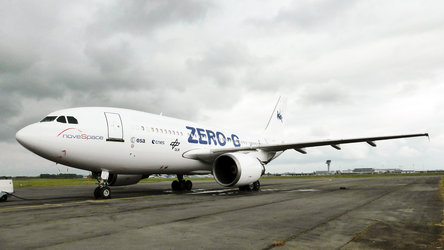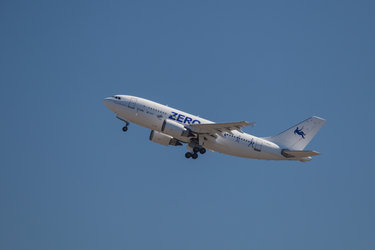Accept all cookies Accept only essential cookies See our Cookie Notice

About ESA
The European Space Agency (ESA) is Europe’s gateway to space. Its mission is to shape the development of Europe’s space capability and ensure that investment in space continues to deliver benefits to the citizens of Europe and the world.
Highlights
ESA - United space in Europe
This is ESA ESA facts Member States & Cooperating States Funding Director General Top management For Member State Delegations European vision European Space Policy ESA & EU Space Councils Responsibility & Sustainability Annual Report Calendar of meetings Corporate newsEstablishments & sites
ESA Headquarters ESA ESTEC ESA ESOC ESA ESRIN ESA EAC ESA ESAC Europe's Spaceport ESA ESEC ESA ECSAT Brussels Office Washington OfficeWorking with ESA
Business with ESA ESA Commercialisation Gateway Law at ESA Careers Cyber resilience at ESA IT at ESA Newsroom Partnerships Merchandising Licence Education Open Space Innovation Platform Integrity and Reporting Administrative Tribunal Health and SafetyMore about ESA
History ESA Historical Archives Exhibitions Publications Art & Culture ESA Merchandise Kids Diversity ESA Brand Centre ESA ChampionsLatest
Space in Member States
Find out more about space activities in our 23 Member States, and understand how ESA works together with their national agencies, institutions and organisations.
Science & Exploration
Exploring our Solar System and unlocking the secrets of the Universe
Go to topicAstronauts
Missions
Juice Euclid Webb Solar Orbiter BepiColombo Gaia ExoMars Cheops Exoplanet missions More missionsActivities
International Space Station Orion service module Gateway Concordia Caves & Pangaea BenefitsLatest
Space Safety
Protecting life and infrastructure on Earth and in orbit
Go to topicAsteroids
Asteroids and Planetary Defence Asteroid danger explained Flyeye telescope: asteroid detection Hera mission: asteroid deflection Near-Earth Object Coordination CentreSpace junk
About space debris Space debris by the numbers Space Environment Report In space refuelling, refurbishing and removingSafety from space
Clean Space ecodesign Zero Debris Technologies Space for Earth Supporting Sustainable DevelopmentLatest
Applications
Using space to benefit citizens and meet future challenges on Earth
Go to topicObserving the Earth
Observing the Earth Future EO Copernicus Meteorology Space for our climate Satellite missionsCommercialisation
ESA Commercialisation Gateway Open Space Innovation Platform Business Incubation ESA Space SolutionsLatest
Enabling & Support
Making space accessible and developing the technologies for the future
Go to topicBuilding missions
Space Engineering and Technology Test centre Laboratories Concurrent Design Facility Preparing for the future Shaping the Future Discovery and Preparation Advanced Concepts TeamSpace transportation
Space Transportation Ariane Vega Space Rider Future space transportation Boost! Europe's Spaceport Launches from Europe's Spaceport from 2012Latest

Zero-G Spiderman
Thank you for liking
You have already liked this page, you can only like it once!
Gravity: we can live with it, and it turns out we can live without it, for a little while anyway.
Under the elemental force of nature keeping all our parts and planet together, humans thrive. But in weightlessness and funny things begin to happen. Our muscles start to wear away, our bones decay, our balance shifts and our spatial perception falters.
Astronauts living and working in space are helping researchers determine the acceptable limits of these changes. So too are subjects taking part in experiments here on Earth.
In this image, a volunteer tries to get to the tennis ball as part of an experiment testing the influence of weightlessness on the perception of distance. He must first determine the distance of the ball from his person under normal gravity conditions by walking blindfolded to it.
For the microgravity portion of the experiment, researchers set up a sled along which subjects can pull themselves to the ball. In this scenario, the body is reclined and the arms are helping, giving the brain some more signals to work with to estimate the distance.
The experiment, developed by the Lyon Neuroscience Research Center in France, is taking place on this week's parabolic flight campaign aboard a Novespace Zero-G aircraft. The special aircraft simulates different levels of gravity, from 2g to 0g, by flying in parabolas.
Researchers will compare the results in normal gravity conditions (1g), nearly twice the force on the upward incline of the plane (1.8 g), and at freefall during the plane’s descent (0g).
Astronauts have long reported spatial disorientation in orbit. Without a grip on where you are in space, it is hard to measure distance. This can affect astronauts’ performance when using the robotic arm or during a spacewalk. To solve the problem, researchers must first assess the full scope of it.
Previous runs of this experiment had the subjects blind-pulling themselves up or down while sitting up and lying down. In the latest iteration, researchers will test lateral distance perception by having subjects blind-pull themselves to the left and right to the ball.
The ultimate goals of the experiment are to better understand to what degree gravity or the lack of it affects the sensorimotor (what we see) and neurocognitive (what we think) systems.
Deeper insights into these systems will help researchers fine tune the countermeasures that help keep astronauts living in space healthy during and after spaceflight.
On Earth, we deal with gravity every day. We feel it, we fight it, and – more importantly – we investigate it. Space agencies such as ESA routinely launch spacecraft against our planet’s gravity, and sometimes these spacecraft borrow the gravity of Earth or other planets to reach interesting places in the Solar System. We study the gravity field of Earth from orbit, and fly experiments on parabolic flights, sounding rockets and the International Space Station to examine a variety of systems under different gravitational conditions. On the grandest scales, our space science missions explore how gravity affects planets, stars and galaxies across the cosmos and probe how matter behaves in the strong gravitational field created by some of the Universe’s most extreme objects like black holes. Join the conversation online this week following the hashtag #GravityRules
-
CREDIT
Novespace -
LICENCE
ESA Standard Licence

Air Zero-g

Zero-G Airbus A300

Air Zero-g

Zero-G takeoff















 Germany
Germany
 Austria
Austria
 Belgium
Belgium
 Denmark
Denmark
 Spain
Spain
 Estonia
Estonia
 Finland
Finland
 France
France
 Greece
Greece
 Hungary
Hungary
 Ireland
Ireland
 Italy
Italy
 Luxembourg
Luxembourg
 Norway
Norway
 The Netherlands
The Netherlands
 Poland
Poland
 Portugal
Portugal
 Czechia
Czechia
 Romania
Romania
 United Kingdom
United Kingdom
 Slovenia
Slovenia
 Sweden
Sweden
 Switzerland
Switzerland
























